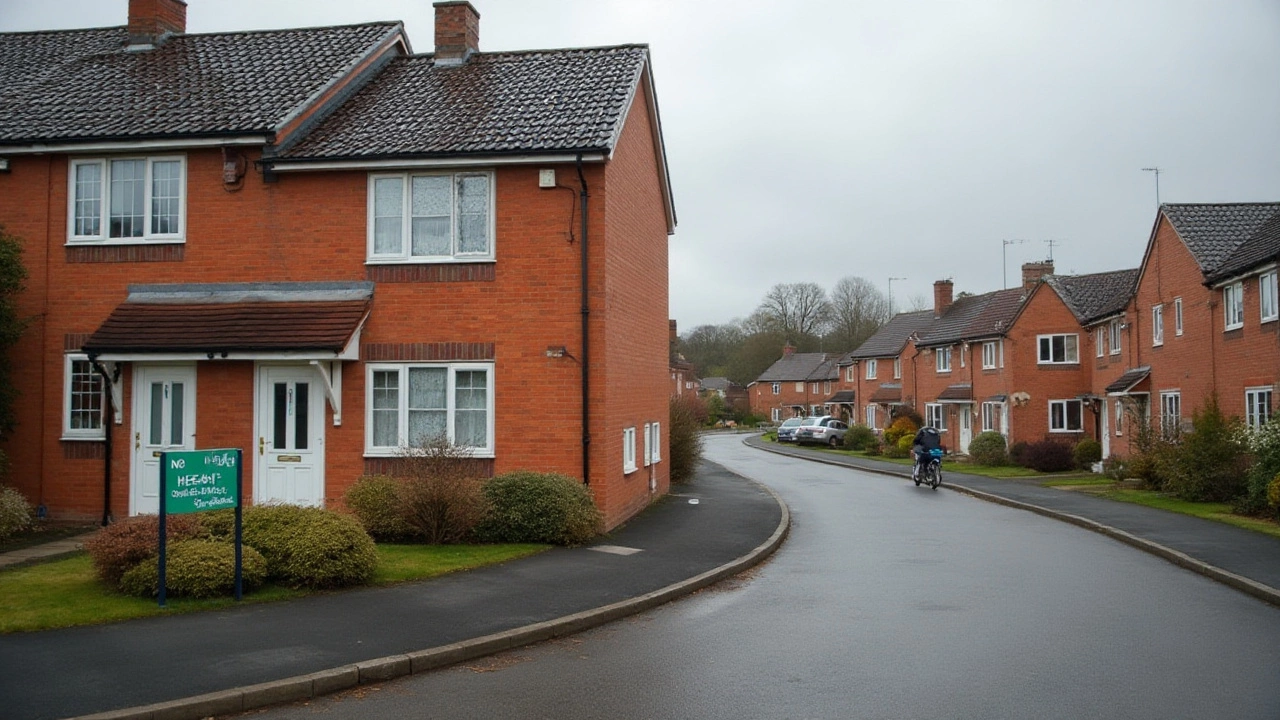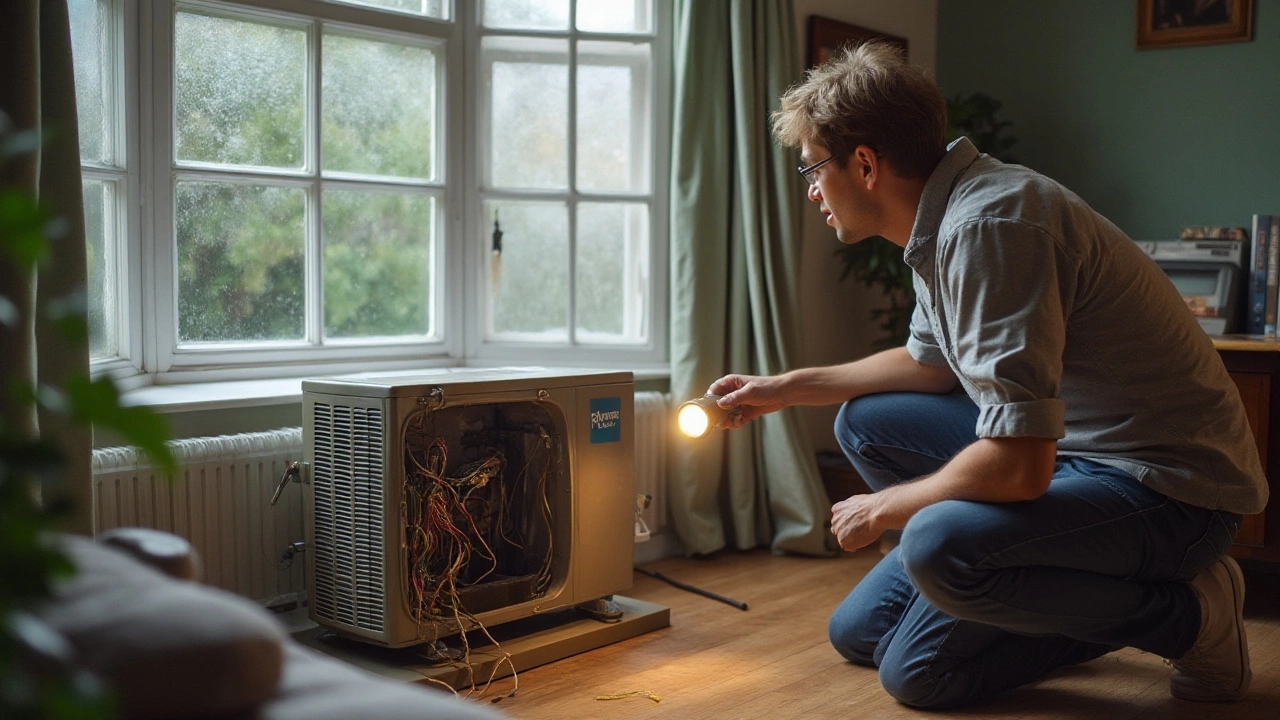When the temperature starts to shift, heat pumps are an essential part of many homes, helping to keep the indoor climate just right. But like all machinery, they can sometimes go on the fritz, disrupting comfort and efficiency. A heat pump that's not working properly can leave you feeling anything but cozy, and fixing the issue becomes essential.
Understanding the reasons behind a heat pump's failure can save time, money, and a lot of frustration. Whether it’s something as simple as a tripped breaker or more complex issues like a faulty compressor, each problem has its own set of signals. Knowing what to look for and how to address issues early can make all the difference.
This article dives into some of the most common culprits behind heat pump failures, giving you not only the insight you need to identify issues but practical advice on how to tackle them. By maintaining a regular care routine and staying vigilant for changes in performance, you can help your heat pump function smoothly throughout its lifespan.
- Signs Your Heat Pump is Malfunctioning
- Electrical Problems and Solutions
- Impact of Poor Installation
- Age and Wear-Related Issues
- Preventive Maintenance Tips
Signs Your Heat Pump is Malfunctioning
Recognizing the subtle and, at times, not-so-subtle signs that your heat pump is malfunctioning is key to preventing larger, more costly repairs down the road. One of the most apparent indications can be found in unusual noises, which might sound like grinding or squealing. These noises are often indicative of worn-out components or debris lodged in the system. Such sounds should never be ignored as they might suggest that internal parts are rubbing against each other, resulting in further damage if not addressed promptly.
Another telltale sign of a heat pump failure is inconsistent heating or cooling throughout your home. This variation in performance can stem from many causes, such as a failing compressor or issues with the thermostat not accurately communicating with the system. If certain rooms are colder or warmer than others despite the thermostat settings, it’s time to have a professional look at the system. Also, take note if the unit is turning on and off more frequently than usual, known as short cycling, which often signals a refrigerant leak or a more serious mechanical issue that requires immediate attention.
High energy bills without a corresponding increase in usage can be another red flag. Often, an inefficient or worn-out heat pump will require more power to maintain desired comfort levels, thereby driving up energy costs. If your electricity bills have climbed unexpectedly, it might be a cue your HVAC maintenance has been neglected or there’s an underlying issue not yet apparent. Aditionally, if you detect a strange odor like a burning smell, it could indicate an electrical problem. These problems require urgent professional attention to prevent potential hazards.
It's also crucial to look for visible signs of trouble, which can include ice buildup on the coils or leaks around the unit. Ice can form due to blocked airflow or low refrigerant levels, signifying it’s struggling to maintain temperature. A pool of water around your heat pump might mean there’s a clogged drain, which could escalate to a more serious concern if not remedied quickly. According to an HVAC expert, "Routine checks of your heat pump can identify issues like refrigerant leaks before they severely impact your system," as noted by a technician from Energy Star in their guidelines.
Lastly, an aging heat pump naturally tends to show signs of exhaustion after about 10 to 15 years. At this point, the wear and tear might make repair less cost-effective compared to replacement. Being mindful of these signs helps you to diagnose problems promptly, increasing your energy efficiency and extending the life of your system. Having a checklist and conducting seasonal checks can go a long way in ensuring that any issues are caught early when they’re easier and cheaper to fix.
Electrical Problems and Solutions
Heat pump repair often begins with examining electrical components, which play a pivotal role in the unit's overall functionality. It's fascinating to consider how even a minor electrical glitch can cascade into major issues, affecting the efficiency and reliability of the entire system. One of the most common problems faced by homeowners is a tripped circuit breaker. This might happen due to sudden power surges or even faults within the heat pump's components themselves. It's crucial to approach such issues with a careful, methodical mindset to avoid potential hazards like electrical shocks or even fires. Consulting a professional electrician can provide the expertise needed to troubleshoot safely, thus ensuring both your safety and the longevity of your appliance.
Another frequent electrical issue is related to faulty capacitors. These components are crucial for kickstarting the compressor and fans within the heat pump. A bad capacitor can render your heat pump ineffective, often causing short-cycling, where the unit turns on and off rapidly, reducing its cooling or heating efficiency. Replacing a capacitor can be a matter of professional maintenance, ensuring that the right voltage and capacity are chosen to match the system. It's not just about replacement, though; regular checks and timely tune-ups can prevent these components from failing in the first place.
Wiring issues can also pose a significant challenge. Over time, wires can become frayed or damaged due to environmental conditions or simply wear and tear. This can lead to power loss, short circuits, or erratic behavior from the heat pump. Proper inspection of all visible and accessible wiring should be part of routine maintenance. Securing loose connections and replacing worn wires can ensure that your system continues to function optimally, reducing the risks associated with electrical faults.
Thermostat Malfunctions
Even the control center of your HVAC maintenance—the thermostat—can be a source of electrical woes. A malfunctioning thermostat might fail to communicate accurately with the heat pump, leading to delays in response or incorrect temperature settings. This could be due to wiring problems, or perhaps an outdated model that requires an upgrade to meet modern standards. Smart thermostats offer improved energy efficiency and are worth considering if you're experiencing recurring issues.Finally, weather-related events like lightning strikes can cause electrical damage to your heat pump. Installing a surge protector specifically for your HVAC system can mitigate the risk of electrical overload, safeguarding against unexpected natural events. This is a small investment that can prevent significant damage to your heat pump's electrical components, ensuring it's fortified against adverse conditions. According to HVAC expert James Reynolds, "Many homeowners overlook the importance of protecting their heat pump from electrical surges, yet those who invest in surge protection often see fewer electrical breakdowns and longer-lasting equipment."
| Common Electrical Issues | Impact |
|---|---|
| Tripped Circuit Breaker | Stops all operations, requiring manual reset. |
| Faulty Capacitors | Causes short-cycling and inefficient performance. |
| Damaged Wiring | Leads to power loss and potential safety hazards. |

Impact of Poor Installation
When it comes to heat pump performance, the installation phase plays a crucial role that cannot be underestimated. Picture this: you’ve invested in a top-of-the-line heat pump, balanced just right between performance and energy efficiency. Yet, without proper installation, even the most advanced systems can underperform or fail prematurely. Many homeowners discover that their comfort issues and increased energy bills trace back not to the equipment itself, but to how it's been set up. Let’s dive into how these impacts manifest and what steps can be taken to avoid such pitfalls.
For starters, poor installation can result in inappropriate sizing of the heat pump for the space. If the system is too large, it may cycle on and off more frequently than necessary, failing to deliver the desired comfort while consuming excess energy. On the flip side, a heat pump that's too small might strain to meet the heating and cooling demands, wearing out quicker due to overuse. These sizing issues can not only impact immediate performance but also reduce the lifespan of the unit, leading you straight back to the store—something we all aim to avoid.
"The critical measure of success with heat pump installations is ensuring proper sizing and configuration for each unique home's requirements," notes HVAC expert Dr. Lisa Carter.
Moreover, let's talk about ductwork, which acts like the arteries of your heating and cooling system. Poor installation might leave the duct system leaking air, costing you dearly in terms of energy losses. Studies suggest that improperly sealed ducts can lead to energy losses of up to 30%, a significant hit to a home's overall energy efficiency. Ensuring that ducts are tightly sealed and well-insulated can prevent these losses, enhancing the system’s performance and saving more on your bills.
Another significant aspect is electrical connections. A poorly installed heat pump might have faulty wiring or weak connections, leading to frequent tripping of circuit breakers or, worse, posing risks of electrical fires. Ensuring that connections are secure and up to code is paramount for safe operation. Additionally, attention to detail during the installation process ensures proper refrigerant levels, avoiding issues like insufficient heating or cooling.
- Secure electrical connections to avoid safety hazards.
- Seal ducts properly to minimize energy losses.
- Check refrigerant levels to ensure efficient operation.
Beyond the clear technical issues, poor installation can affect user experience. An improperly installed heat pump might produce unusual noises or vibrations, surprisingly enough, those subtle annoyances can disrupt your peace of mind at home. Attention to these details during installation can lead to a quieter and much more pleasant environment, truly reflecting the potential of your equipment.
To avoid these issues, hiring a trained professional with a proven track record for your heat pump installation is strongly advisable. Skilled installers not only bring expertise but ensure that every aspect of the system is finely tuned to your home’s specifics. Routine checks post-installation can help identify any faults early, ensuring that your investment delivers the comfort and efficiency you deserve for years to come.
Age and Wear-Related Issues
Age plays a significant role in the degradation of a heat pump's performance. When heat pumps are newly installed, they function with high efficiency and provide consistent temperature regulation. However, as time wears on, wear-related issues can begin to surface, signaling that the device might be losing its effectiveness. Many heat pumps have an average lifespan of about 10 to 15 years. As they near the end of this period, even the most well-maintained units may start displaying signs of wear and inefficiency. This can include things like reduced heating or cooling ability, unusual noises, and increased energy consumption. For homeowners, this means higher energy bills as the pump works harder to provide the same level of comfort.
A key issue as heat pumps age is the wear on their moving parts. Components like the compressor, which is the heart of the heat pump, take a beating over the years. Their efficiency tends to decline with each passing season. Metal parts may experience corrosion, lubricants can dry out, and seals can become brittle, leading to refrigerant leaks. Leaks are notorious for affecting a heat pump's efficiency, causing it not only to struggle with energy consumption but also to cool or heat unevenly. These wear-and-tear problems often demand more attention and repairs as the unit becomes older, making maintenance an increasingly frequent need.
Industry experts suggest replacing a heat pump after a decade, primarily if repair costs begin to exceed half the price of a new system. According to a comprehensive report by the Energy Information Administration, "Home appliances begin declining in efficiency once they reach their midpoint of the projected lifespan." Energy efficiency becomes a significant concern, especially if the older system isn’t keeping up with the demands of particularly harsh winters or blistering summers. An old pump might still run, but it could fail to maintain a constant temperature, display difficulty in switching modes, or require constant adjustments on the thermostat to reach desired settings.
One might consider a heat pump replacement as an upfront expense. Still, it is crucial to factor in the long-term savings and enhanced comfort offered by a newer, more efficient system. Investing in a model with a higher SEER (Seasonal Energy Efficiency Ratio) can deliver substantial rewards, cutting back on unnecessary expenses and reducing environmental impact. As with many home appliances, the wear and tear from simply being used year after year can't realistically be circumvented. However, understanding this inevitable process and acting accordingly by planning for a timely replacement is an effective strategy for maintaining indoor comfort and efficiency.
Moreover, technological advancements in heat pump designs have resulted in models that are not just better but smarter. They learn the homeowner’s habits and adapt accordingly, leading to better optimized energy usage. These improvements are compelling reasons to consider transitioning to a new model before the current one gives up entirely. Choosing the right time to say goodbye to an old unit and welcoming a new, more efficient system could be the difference between discomfort in extreme temperatures and living effortlessly in a cozy environment year-round.

Preventive Maintenance Tips
Nothing ensures the longevity of your heat pump quite like regular preventive maintenance. It's a bit like taking care of your car; a little attention goes a long way in keeping things running smoothly and efficiently. One of the first things to remember is to schedule routine inspections, ideally in the spring or autumn. These are typically less stressful times for HVAC systems, allowing you to catch potential issues before they become serious problems. During these inspections, focus on things like checking refrigerant levels, cleaning filters, and inspecting the electrical components for any signs of wear or damage. Proper refrigerant levels are crucial for ensuring energy efficiency, as too little can force the system to work harder, leading to increased energy consumption and higher utility bills.
Another essential aspect of maintaining your heat pump is keeping the outdoor unit clean and free of obstructions. Yard debris, leaves, and even grass clippings can accumulate around the system, restricting airflow and putting extra strain on the components. A monthly check is usually sufficient, but more attention might be needed if you live in an area with heavy foliage or during particularly windy seasons. Cleaning the outdoor coils is also important; dirty coils can lower the efficiency of the unit dramatically. Use a garden hose to gently rinse them off, taking care not to bend the delicate fins. If any fins do get bent, a fin comb can help straighten them back out to assure optimal performance.
Change Filters Regularly
Filter changes should be part of your regular routine when it comes to HVAC maintenance. Most experts recommend replacing the air filter every one to three months, depending on your home's conditions and the type of filter used. Homes with pets or those in areas with high pollen count may require more frequent changes. A clean filter not only improves air quality but also allows your system to run more efficiently. When filters are clogged, the air can't flow as easily, leading your heat pump to work harder, potentially shortening its lifespan. Investing in high-quality filters can also enhance performance, as they are far more effective in trapping dust, dander, and other airborne particles.
An ounce of prevention is worth a pound of cure, says Benjamin Franklin, and this wisdom is particularly true for technology that requires ongoing attention to maintain its functionality and efficiency.Being proactive about replacing filters can help to prevent mechanical problems and keep the air you breathe fresh and clean. While changing filters, don't forget to inspect other internal parts for dust and grime buildup as it’s an opportunity to thoroughly clean your heat pump unit.
Check Thermostat Settings
Another aspect of heat pump repair you should regularly address is the thermostat. Proper calibration ensures that your home maintains a comfortable temperature without putting additional strain on your system. If your thermostat isn't correctly calibrated, your heat pump might cycle more frequently than necessary, wearing it down and increasing your energy costs in the process. Consider upgrading to a programmable or smart thermostat if you haven't already. These devices adjust the temperature automatically to align with your schedule, helping to conserve energy when you're away from home or asleep. Calibration checks can often be done simply by comparing the thermostat's reading with a trusted thermometer in the room. Any significant discrepancies should be investigated further, possibly requiring professional calibration or replacement.
The importance of regularly servicing your heat pump cannot be understated. Following these maintenance tips will not only enhance the performance of your system but will also save you money in the long run. An efficient heat pump means a lower carbon footprint, which is better for the environment. Maintaining your heat pump can sometimes feel like a chore, but the benefits — which include reduced repair costs, a more comfortable home, and increased efficiency — make it well worth the effort. Remember, the goal is to prevent breakdowns and ensure your system is running as smoothly and efficiently as possible, especially as the seasons change and the demands on your system increase.


